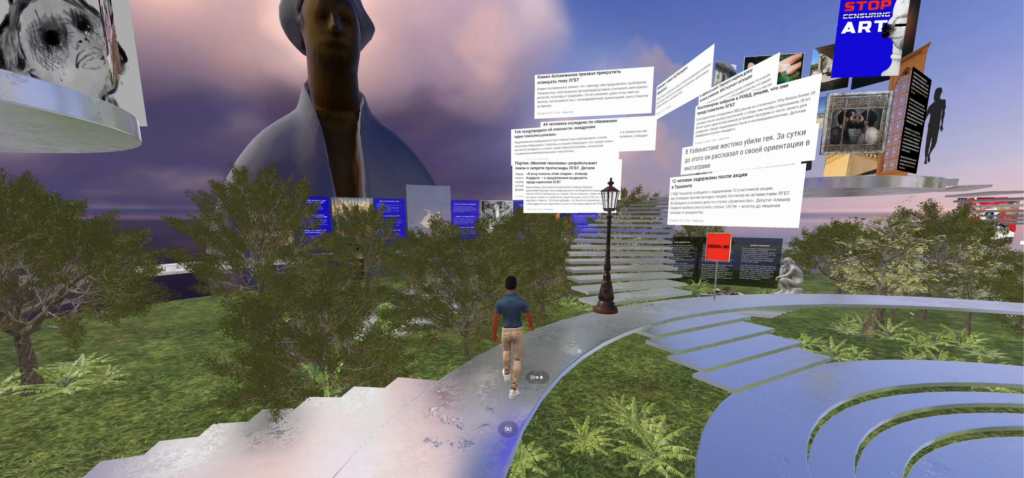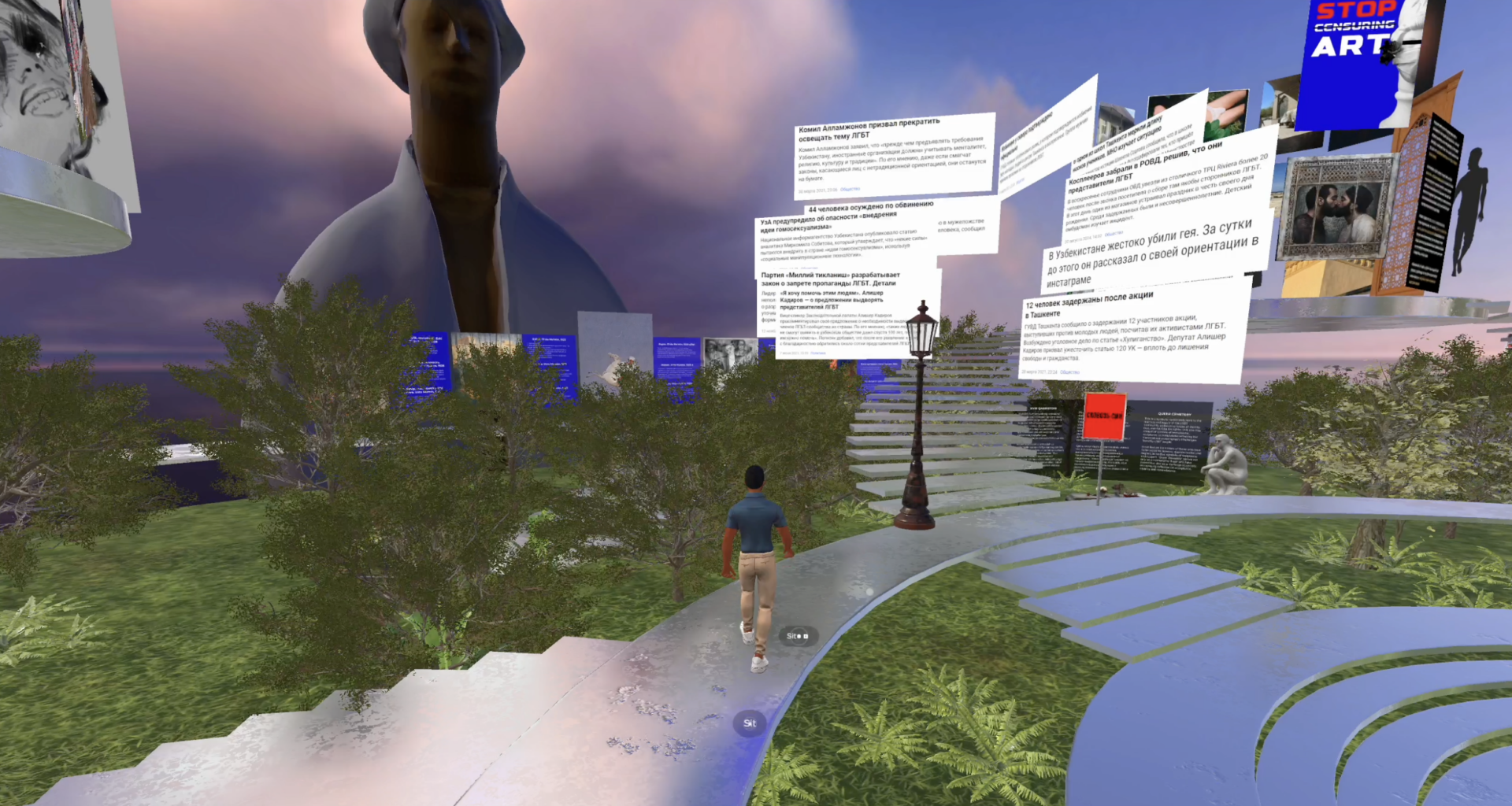The idea for Queer Square came from the need for a safe space for queer artists from Uzbekistan to express themselves. It seems to have succeeded.
The legal and social context in Uzbekistan creates significant obstacles for LGBTIQ+ people. Article 120 of the Criminal Code, which criminalizes same-sex relationships between men, is in practice used to completely ban the expression and even the very existence of LGBTIQ+ people. The taboo on discussing this topic also extends to the art world, where physical spaces – galleries and museums – are closed to the display of any work that addresses themes of sexuality and gender identity or issues of violence against LGBTIQ+ people.
Artistic expression vs. safety concerns
The exhibition «Queer Square» is located in the metaverse platform Spatial. According to its creators, this format offers a wide range of flexibility for artistic expression. Here creators were able to realize experiments with the arrangement of works, animation, and sounds, which are impossible or extremely difficult to perform in the usual offline spaces of museums and galleries.
However, first and foremost, virtual space is a tool for solving the problem of security and anonymity. In the conditions of Uzbekistan’s homophobic society, it’s only online where queer artists can show their works without censorship, and viewers can come and look at them without fear. As the creators say, the digital format also allows them to transcend geographical limitations and reach a wider audience at domestic and international levels.
How to visit the Queer Square exhibit
The Spatial platform is user-friendly and requires no special technical skills or tools. It is accessible from any device, but for a more immersive experience, it is better to log in from a computer. Entering the exhibition space, the visitor is given a virtual character and moves around the “square”, stopping and studying the works accompanied by light ambient music.
No registration is required and no data is recorded about visitors. However, for greater security, the exhibition is recommended to visit with a VPN enabled.
“Queer Square” will be a permanent feature of the digital space, which is why the exhibition has no closing date. In the future, the curators of the exhibition hope to attract new people from Uzbekistan and potentially all of Central Asia, and to create a dynamic platform that will constantly evolve and reflect the diversity of experiences of queer people.
«Queer cemetery» and personal manifestos: what can be seen at the exhibition
The exhibition intentionally brings together a diverse range of artworks that reflect the equally diverse experiences and perspectives of LGBTIQ+ people in Uzbekistan. Dozens of paintings, photographs, collages, illustrations and sculptures are on display. Artists have been given complete freedom to arrange their spaces.
One of these spaces begins with a journey up a staircase through news headline clippings showing the daily experience of a queer person.
In my artwork I tried to express my love for the queer community and at the same time show my love to the country, despite all the difficulties faced by LGBTQ+ people in Uzbekistan
In my artwork I tried to express my love for the queer community and at the same time show my love to the country, despite all the difficulties faced by LGBTQ+ people in Uzbekistan

Another artist reinterprets traditional gender roles and stereotypes by adding elements of suzane embroidery to his makeup in one of his works. The author challenges conventional ideas of masculinity and reclaims his right to use traditional elements, celebrating his queer identity, his love of his homeland, and his strong connection to his historical and cultural roots.
While working on my “island”, I reflected on what I put into these works: a part of my culture, a deeply personal and my vision of art. What once inspired me has found a new breath
While working on my “island”, I reflected on what I put into these works: a part of my culture, a deeply personal and my vision of art. What once inspired me has found a new breath.
Almost a hundred people visited the exhibition on its opening day. Its organizers want more people to learn about the exhibition and perhaps be inspired to create, rethink, and discuss human rights and LGBTIQ+ rights in Uzbekistan.
But the exhibition is important not only for the number of visitors – it also has an impact on the authors of the works themselves. As the organizers write, one of the most gratifying aspects of the project was observing the transformative effect it had on the participating artists. Many have felt a deep sense of recognition and belonging, finding comfort in connecting with a community that understands and values their experiences.
For example, an artist whose work explores the complexities of gender dysphoria shared that participating in the exhibition gave her the opportunity to express feelings and experiences that have long been suppressed due to fear of judgment, and inspired her to create new work. For many, this exhibition was the first opportunity to publicly display their work.
The project helped me to release the emotions that had accumulated because of the situation in society into my work. Now I know for sure that there is a space where people can see my work in Uzbekistan — it can evoke a soulful response in some people, perhaps help them realize something important and feel that they are not alone in this world
The project helped me to release the emotions that had accumulated because of the situation in society into my work. Now I know for sure that there is a space where people can see my work in Uzbekistan — it can evoke a soulful response in some people, perhaps help them realize something important and feel that they are not alone in this world.




